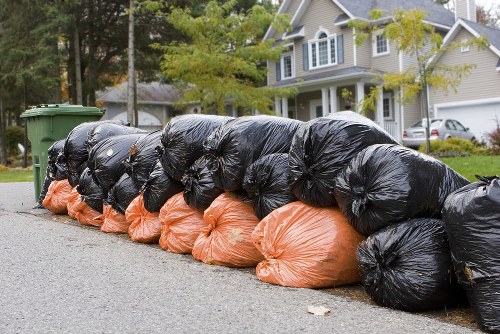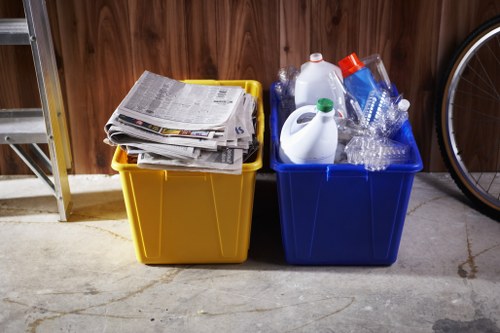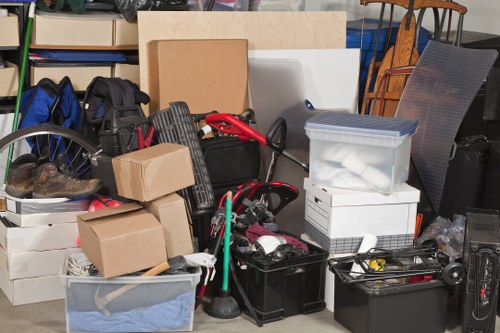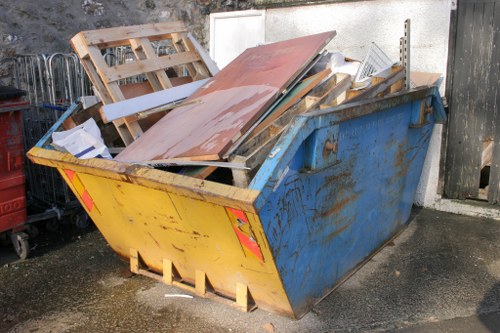Demolition Waste Removal in Mitcham
When undertaking a demolition project in Mitcham, effective waste removal is crucial for ensuring a smooth and compliant process. Proper demolition waste removal not only maintains the cleanliness of the site but also adheres to environmental regulations, fostering sustainability in the community.
Choosing the right demolition waste removal service can significantly impact the efficiency and overall success of your project. From reducing environmental impact to ensuring the safe disposal of hazardous materials, professional services offer comprehensive solutions tailored to your specific needs.
In this article, we will explore the various aspects of demolition waste removal in Mitcham, including the types of waste generated, the importance of proper disposal, and how to select the best service provider for your project.
Understanding Demolition Waste

Demolition projects inevitably produce a significant amount of waste, ranging from concrete and metals to hazardous materials like asbestos. Understanding the types of waste generated is the first step towards effective waste management.
Concrete and masonry are among the most common materials removed during demolition. These materials are heavy and require specialized equipment for safe removal and transportation.
Metals, including steel and aluminum, are valuable resources that can be recycled, reducing the environmental footprint of your project.
Regulations and Compliance

Mitcham has strict regulations governing demolition waste removal to ensure environmental protection and public safety. Compliance with these regulations is not only a legal requirement but also a responsible practice.
Permits are often required before beginning a demolition project. These permits outline the scope of work, waste management plans, and compliance with local environmental standards.
Failure to adhere to these regulations can result in hefty fines and project delays, emphasizing the importance of partnering with a knowledgeable demolition waste removal service.
Services Offered by Demolition Waste Removal Providers

Professional demolition waste removal services in Mitcham offer a wide range of solutions to cater to various project needs. These services ensure that waste is handled efficiently and responsibly from start to finish.
1. Waste Collection and Transportation: Efficient collection and transportation of demolition waste are essential to prevent site congestion and expedite the disposal process.
2. Sorting and Recycling: Many providers offer sorting services to separate recyclable materials, contributing to environmental sustainability and cost savings.
Benefits of Professional Demolition Waste Removal

Engaging a professional demolition waste removal service offers numerous benefits that enhance the overall efficiency and compliance of your project.
Environmental Responsibility: Proper disposal and recycling of materials reduce the environmental impact of demolition activities, promoting sustainability.
Cost-Effectiveness: Professional services can manage waste more efficiently, often reducing overall project costs through optimized processes and recycling initiatives.
Safety and Risk Management
Professional removal services implement safety protocols to handle hazardous materials, minimizing risks to workers and the surrounding community.
By adhering to safety standards, these services prevent accidents and ensure a secure demolition environment.
Recycling and Sustainability

Recycling plays a pivotal role in sustainable demolition waste management. By diverting materials from landfills, recycling conserves natural resources and reduces greenhouse gas emissions.
Many demolition waste removal services in Mitcham prioritize recycling, ensuring that materials like metal, wood, and concrete are processed and reused effectively.
Sustainable practices not only benefit the environment but also enhance the reputation of your project as environmentally conscious.
Innovative Recycling Techniques
Advancements in recycling technology have made it easier to process a wide range of demolition materials. Techniques such as shredding, grinding, and magnetic separation enable efficient material recovery.
Implementing these innovative methods ensures maximum resource recovery and minimizes waste.
Cost Factors in Demolition Waste Removal
The cost of demolition waste removal can vary based on several factors, including the volume and type of waste, the complexity of the project, and the specific services required.
- Volume of Waste: Larger projects generate more waste, increasing transportation and disposal costs.
- Type of Materials: Hazardous materials require specialized handling and disposal, which can add to the overall cost.
- Service Level: Comprehensive services, including sorting and recycling, may involve higher upfront costs but offer long-term savings.
Understanding these factors can help you budget effectively and choose a service that offers the best value for your specific needs.
Cost-Saving Strategies
Implementing cost-saving strategies, such as maximizing material recycling and optimizing waste transportation routes, can significantly reduce overall expenses.
Collaborating with a service provider that emphasizes efficiency and sustainability often leads to more economical demolition waste removal solutions.
Choosing the Right Demolition Waste Removal Service

Selecting the appropriate service provider is critical to the success of your demolition project in Mitcham. Several key factors should be considered to ensure you partner with a reliable and competent team.
- Experience and Reputation: Look for companies with a proven track record and positive reviews from past clients.
- Compliance and Certifications: Ensure the service provider adheres to local regulations and holds necessary certifications.
- Range of Services: A comprehensive service offering can handle all aspects of waste removal, from collection to recycling.
- Environmental Practices: Prioritize companies that emphasize sustainable practices and recycling initiatives.
By carefully evaluating these factors, you can select a demolition waste removal service that aligns with your project goals and sustainability objectives.
Evaluating Service Providers
Conduct thorough research and request detailed proposals from potential providers. Assess their ability to meet your specific needs and evaluate their commitment to quality and sustainability.
Engaging in consultations and requesting references can further inform your decision-making process.
The Demolition Waste Removal Process
Understanding the step-by-step process of demolition waste removal can help you better manage your project and set realistic expectations.
1. Assessment and Planning: The service provider assesses the site, identifies the types of waste, and develops a comprehensive removal plan.
2. Permitting and Compliance: Obtaining necessary permits and ensuring compliance with local regulations is a crucial initial step.
3. Waste Collection: Systematic collection of debris using appropriate equipment to prevent site congestion.
Transportation and Disposal
Efficient transportation involves safely moving waste from the site to designated disposal or recycling facilities. Proper disposal methods ensure environmental standards are met.
Recycling facilities play a significant role in minimizing landfill usage, emphasizing the importance of partnering with eco-conscious service providers.
Overcoming Common Challenges

Demolition waste removal can present several challenges, including handling hazardous materials, managing large volumes of debris, and adhering to tight project timelines.
Professional service providers are equipped to tackle these challenges through specialized equipment, expert knowledge, and efficient processes.
For instance, handling asbestos requires strict safety protocols and specific disposal methods to prevent contamination.
Effective Solutions
Implementing robust safety measures, investing in advanced equipment, and maintaining clear communication with clients are key to overcoming common waste removal challenges.
By addressing these issues proactively, service providers ensure a seamless demolition process.
Conclusion
Effective demolition waste removal in Mitcham is essential for the success of any demolition project. By understanding the types of waste, adhering to regulations, and partnering with professional service providers, you can ensure a clean, safe, and sustainable demolition process.
Investing in reliable waste removal services not only promotes environmental responsibility but also enhances the efficiency and cost-effectiveness of your project.
Contact us today to learn more about our comprehensive demolition waste removal services and how we can support your next project in Mitcham.